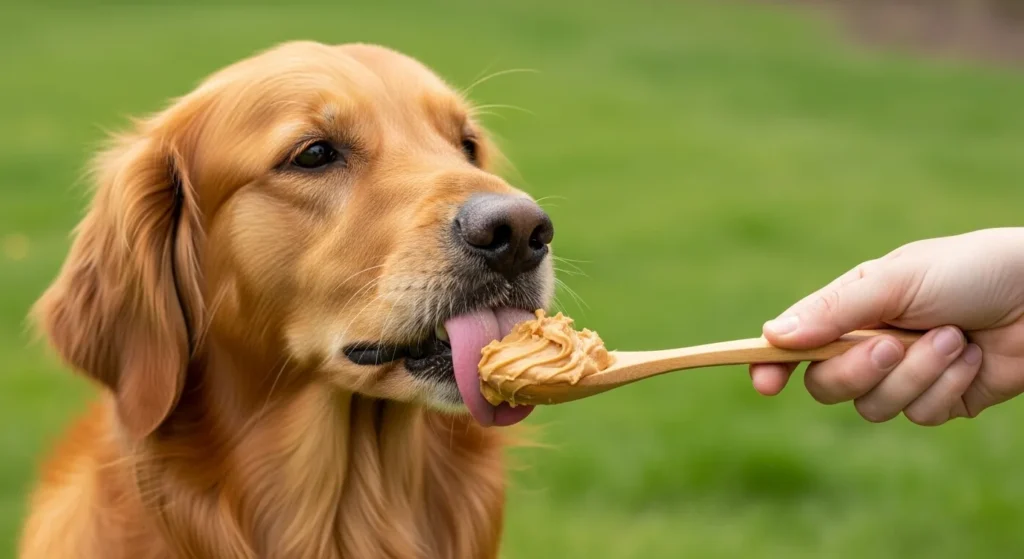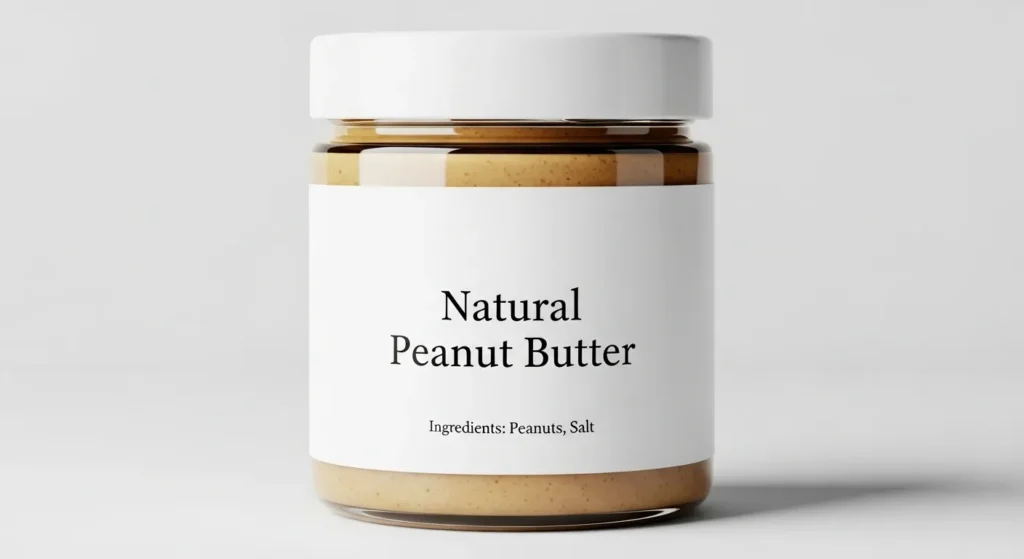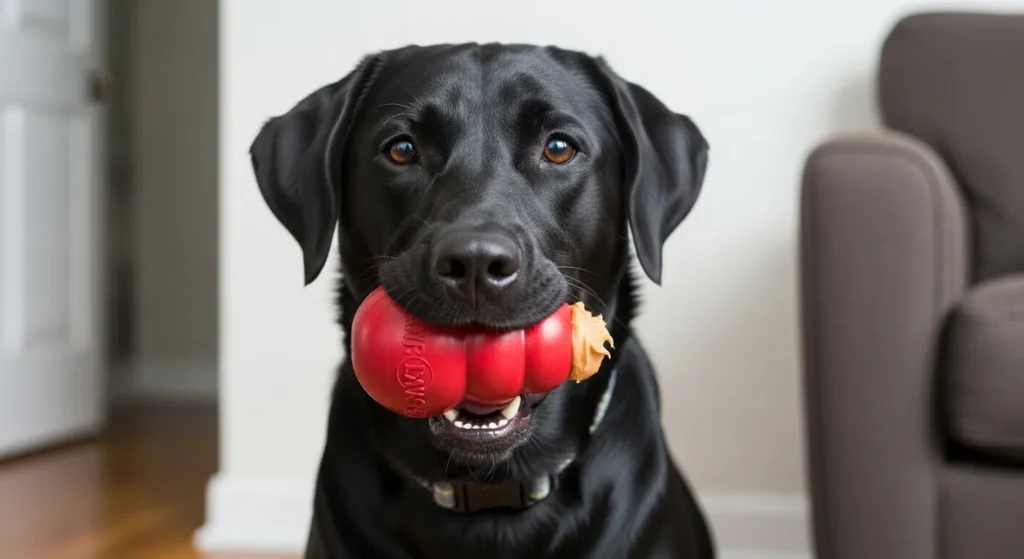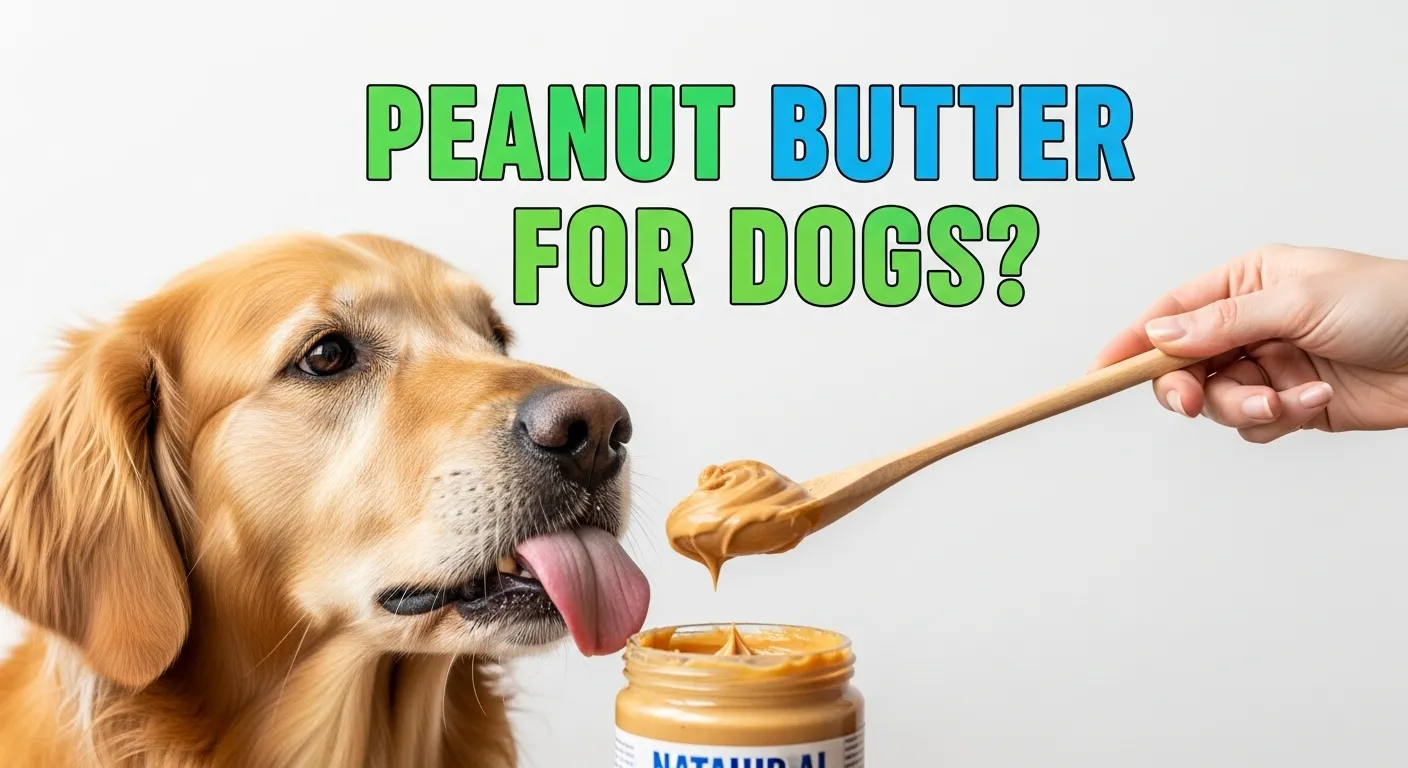Peanut butter ranks high as a treat many dog owners share with their pets. But questions remain about its safety and value. This guide covers the facts based on vet advice and research. It answers if peanut butter benefits dogs, the risks involved, and how to feed it right. We draw from trusted sources to keep info current as of 2025.
Can Dogs Eat Peanut Butter?
Dogs can eat peanut butter. Most types work well in small amounts. It serves as a tasty reward or distraction tool. Yet safety depends on the ingredients. Always pick options without harmful additives.
The main concern is xylitol. This sweetener appears in some brands. It causes low blood sugar and liver issues in dogs. Even a bit can lead to seizures or worse. Check labels each time you buy.
For most healthy dogs, plain peanut butter fits into a balanced diet. Puppies and seniors can have it too, but start small. Watch for any odd reactions.
Benefits of Peanut Butter for Dogs
Peanut butter offers real perks when given right. It packs protein for muscle health. Healthy fats support skin and coat shine. Vitamins B and E aid energy and immune function. Niacin helps with cell repair.
Owners use it for training. The sticky texture keeps dogs busy. Smear it in toys like Kongs for mental exercise. It distracts during nail trims or baths. Some vets suggest it to hide pills.
In moderation, it adds variety to meals. Link it to our pet food safety checker for more treat ideas. Compare to other foods in posts like can dogs eat watermelon or can dogs eat bacon.
- Protein boost: Builds strong muscles.
- Fat for coat: Keeps fur soft and healthy.
- Vitamins: Supports overall wellness.
- Training aid: Rewards good behavior.
These points match what sites like AKC and PetMD note.

Risks and Dangers of Peanut Butter for Dogs
Not all peanut butter suits dogs. High fat content leads to weight gain. Over time, this raises pancreatitis risk. That condition causes stomach pain and vomiting.
Allergies happen but stay rare. Signs include itching, ear infections, or paw chewing. Stop feeding if you spot these. Seek vet help right away.
Salt in some brands harms dogs with kidney trouble. Overweight pups or those on low-fat diets should skip it. Xylitol tops the danger list. Brands like Go Nuts or Nuts ‘N More include it. Symptoms hit fast: weakness, shaking, or collapse.
If your dog eats bad peanut butter, call a vet or poison control at once. For more on allergies, check our pet symptom checker.
Related questions from searches include: Is peanut butter toxic to dogs? Yes, if it has xylitol. Can dogs have peanut allergies? Possible, but uncommon.
- Weight gain: From extra calories.
- Pancreatitis: Due to fats.
- Allergies: Itch or infections.
- Xylitol poison: Life-threatening drop in sugar.
Preventive Vet and ASPCA highlight these issues.
How to Choose Safe Peanut Butter for Dogs
Pick natural peanut butter. Look for just peanuts and maybe salt. Skip added sugars or flavors. Unsalted works best to avoid salt buildup.
Read the label close. Words like xylitol, birch sugar, or xylite mean no go. Safe picks include Jif or Skippy, but confirm each jar. Homemade counts as top choice. Blend unsalted peanuts until smooth.
Dog brands exist too. They skip extras. For brand checks, use our pet food safety checker.
People also ask: What peanut butter is safe for dogs? Natural ones without xylitol. Is Jif peanut butter ok for dogs? Yes, if no xylitol added.
Blue Cross and Purina stress label checks.

How Much Peanut Butter Can Dogs Eat?
Stick to the 10% rule. Treats like this should fill no more than 10% of daily calories. The rest comes from dog food.
Amounts vary by size:
- Small dogs (under 20 lbs): 1/2 teaspoon per day.
- Medium dogs (20-50 lbs): 1 teaspoon.
- Large dogs (over 50 lbs): 1 tablespoon.
Give it once a day at most. Adjust for active pups or those watching weight. Puppies get half the adult dose. Always ask your vet first.
This follows PetMD guidelines from 2025.
Related search: How much peanut butter is too much for dogs? Over the 10% leads to health issues.
Ways to Feed Peanut Butter to Your Dogs
Spread it thin on a lick mat. Or stuff in chew toys for play. Freeze for longer fun. Mix with yogurt for a cool treat, if no dairy issues.
For pills, wrap in a bit of peanut butter. It masks the taste. Use during training sits or stays.
Avoid daily use. Rotate with fruits like in what fruits can dogs eat. For toy ideas, try our pet breed finder quiz to match active breeds.
- In toys: Keeps dogs busy.
- For meds: Hides bitter pills.
- Training: Quick rewards.
- Frozen treats: Slows eating.
AKC suggests these methods.

Homemade Peanut Butter Recipe for Dogs
Make your own to control ingredients. Roast 2 cups unsalted peanuts at 350°F for 10 minutes. Blend until creamy. Add a teaspoon of coconut oil if needed for smoothness.
Store in fridge up to two weeks. Use small scoops as treats. This skips store risks.
Preventive Vet shares similar recipes.
Frequently Asked Questions About Peanut Butter and Dogs
Can puppies eat peanut butter?
Yes, in tiny amounts after weaning. Start with 1/4 teaspoon. Check with vet for breed needs.
Is crunchy peanut butter safe for dogs?
Yes, if natural and xylitol-free. Chunks add texture but watch for choking in small dogs.
Can dogs eat peanut butter every day?
No. Limit to a few times a week to avoid fat buildup.
What if my dog ate peanut butter with xylitol?
Rush to vet. Symptoms start in 30 minutes. Treatment includes IV fluids and monitoring.
Are there alternatives to peanut butter for dogs?
Try pumpkin or yogurt. See our can dogs eat pumpkin seeds post.
These cover common searches like “is peanut butter healthy for dogs” and “best peanut butter brands for dogs.”
For more dog care, link to common dog owner mistakes.
This guide helps you feed smart. Your dog’s health comes first. Consult a vet for personal advice.
